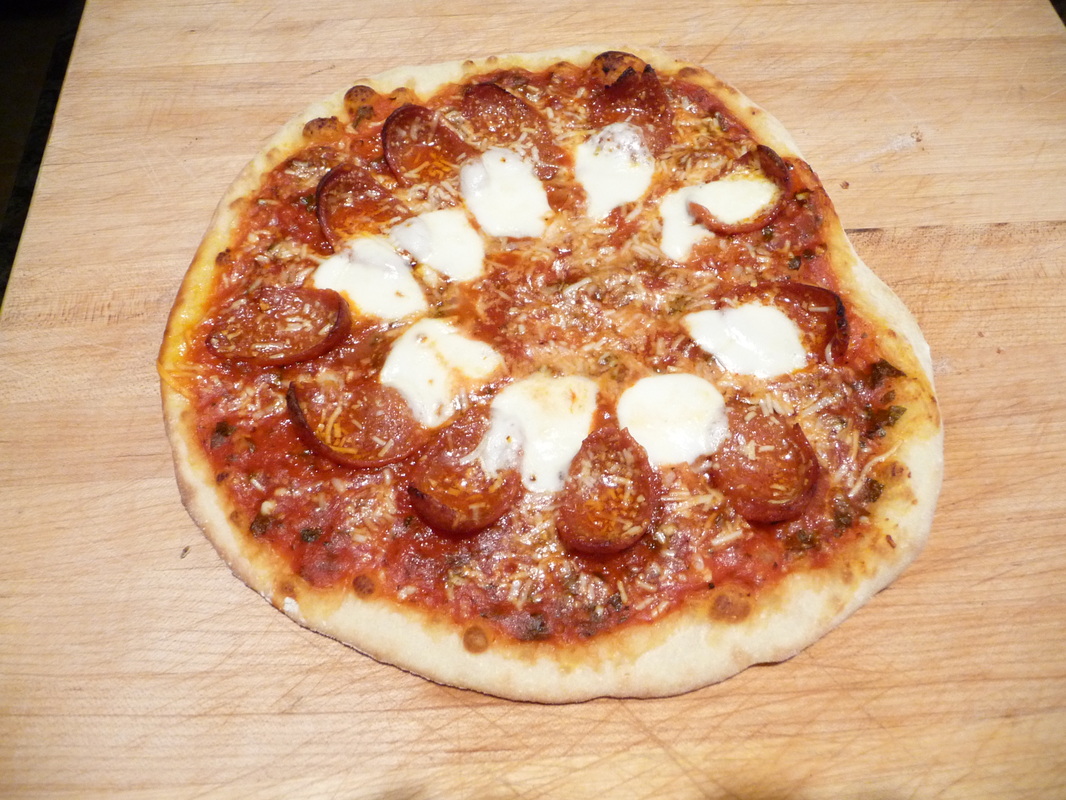| I mentioned in an earlier Blog on pizza that I have been making homemade pizzas since I was a youngster. It is not only easy, it's fun – in fact, a fun project for the entire family. Plus, I think pizzas made at home taste better, and that makes the extra effort worthwhile. I am writing this Blog to provide additional details to those of you who are ready to learn more about making your own pizzas, and to further encourage those of you who are still somewhat skeptical about the whole idea. I like to think of pizzas as being one of two types – thin-crust or pan. There are always exceptions, but pan pizzas generally have thicker crusts – perhaps ½-inch or more. Cooking a pan pizza also requires more time and lower oven temperatures to ensure the thicker dough cooks through. I will write more about pan pizzas separately. Pan pizza options also are described in my recipes for Quick Pan Pizza and Thin-Crust Pizza. | Oven-baked Thin-Crust Pizza with pepperoni, fresh mozzarella cheese, grated pecorino Romano cheese, and my family's Pizza Sauce. |
Besides being solids, ceramic materials (e.g., pizza stones) have a very high heat capacities. This means they capture and hold heat very well. They heat slowly, but they also cool slowly. Consequently, when the cooler pizza is placed on the stone, the heat from the stone rapidly cooks the pizza without significantly reducing the stone's temperature. Sitting on the hot stone, and being surrounded by hot air, the pizza is heated simultaneously from the top (by convection) and bottom (by conduction) and cooks very quickly.
This all means, of course, you will need a pizza stone and a pizza peel (a wooden shovel-like device) to move the pizzas in and out of your oven. A kitchen scale to measure ingredients is also very helpful. When baking pizza dough (or any dough, in fact), the water to flour ratio by weight (called hydration by professional bakers) is extremely important. Too little water and the result will be dry and brittle. Too much and the pizza will be sponge-like and soggy. Equally significant, no two flours are exactly alike – especially their densities (their weight per cup, for example). Weighing the water and the flour eliminates these issues and allows you to measure your ingredients accurately and precisely.
For those of you who do not already have these items in your kitchen, I am including the following recommendations for your convenience. There are many other suppliers of equally acceptable products. Most pizza stones are round, but ovens are not, so I prefer a rectangular stone. The best stone I've found is made by Old Stone Oven. I buy my pizza peels from The WEBstaurant store; and several economical scales are available at Amazon.com.
As I've stated before, none of this is absolutely necessary, but if you've tried the pan approach and agree that it's a distinct improvement over take-out pizza, you may be ready for the next step. If so, what you've just read may help. At least, I certainly hope so.
I rest my case!
Buon appetito.

 RSS Feed
RSS Feed